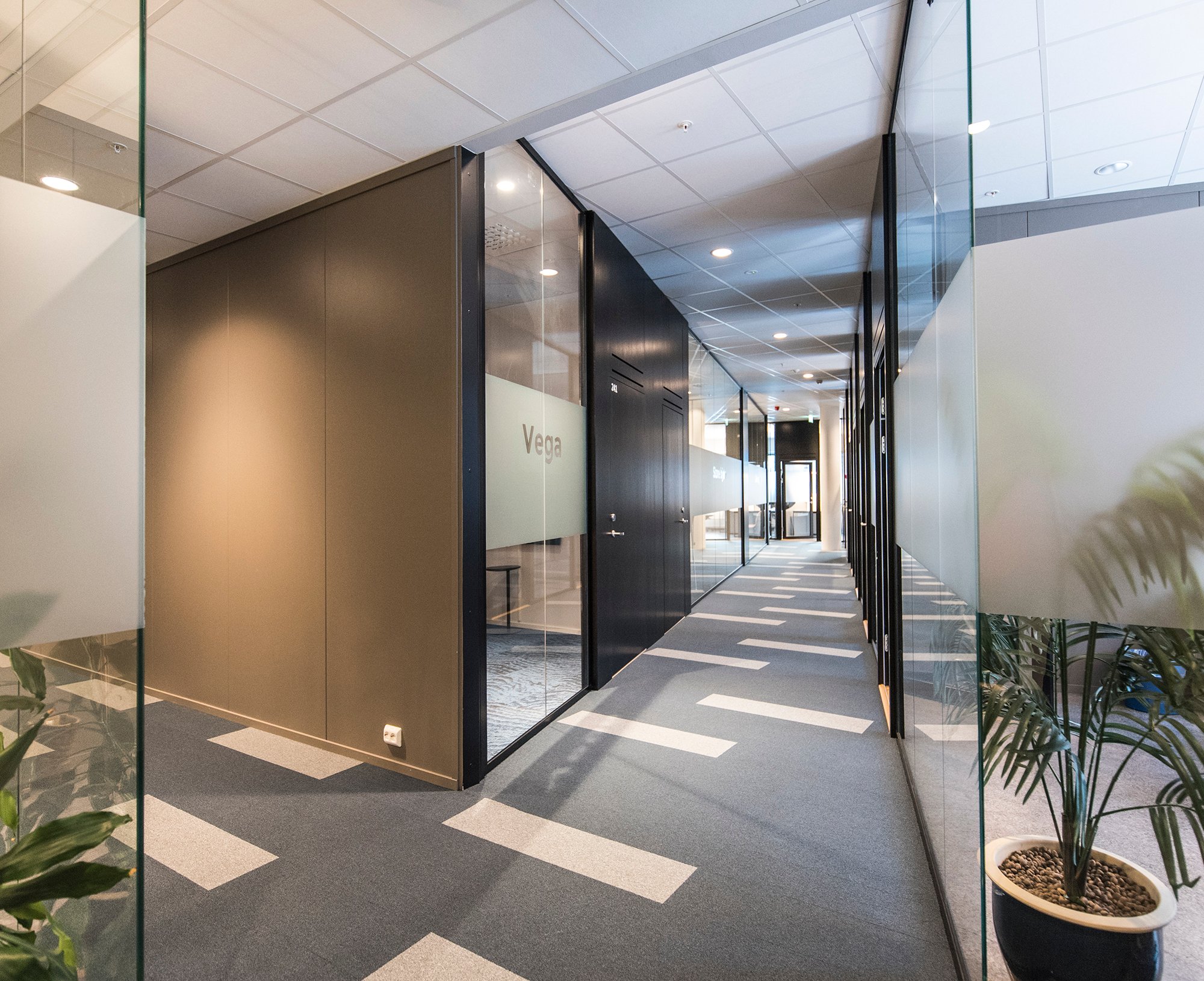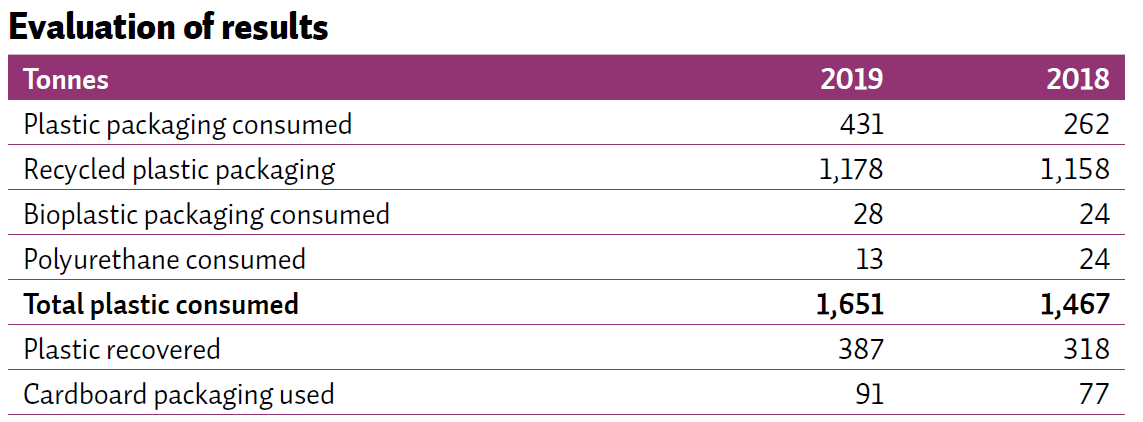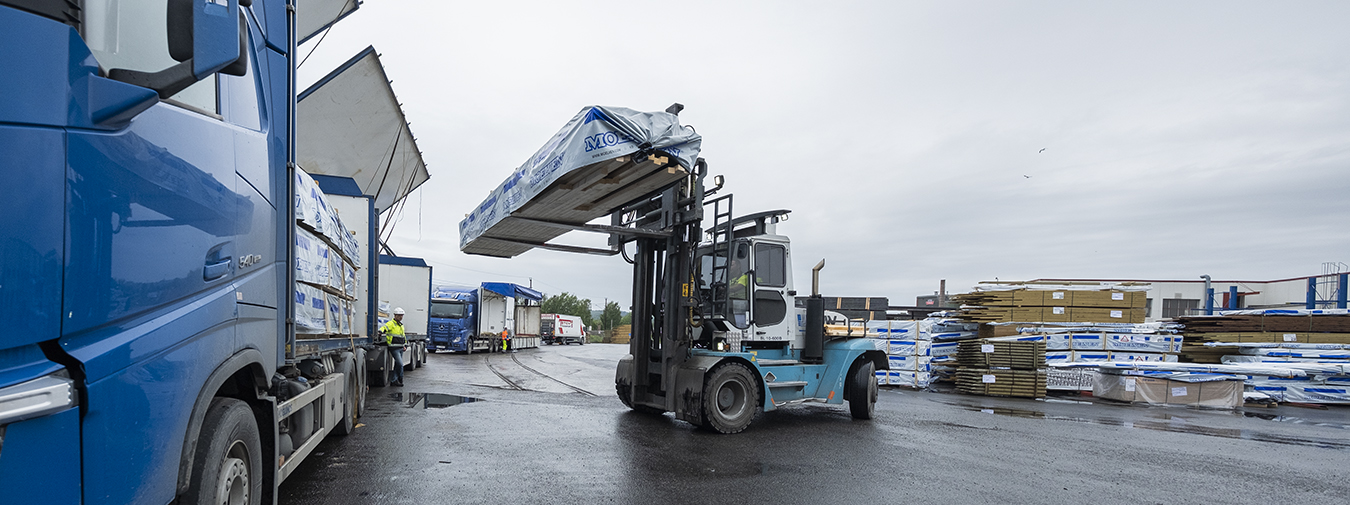Material use is optimised and waste quantities reduced through resource-efficient design and industrialised production in controlled environments in the factory, on the construction site and during the usage phase.
Where and why is it important?
Moelven impacts the environment both through its own industrial operations and the use of our products. Material use is optimised and waste quantities reduced through resource-efficient design and industrialised production in controlled environments in the factory, on the construction site and during the usage phase.
For practical reasons, many products must be stored and transported exposed to the elements. The correct packaging is important in order to preserve quality, although this often also presents environmental challenges.
Moelven uses a lot of plastic for packaging. Plastic takes a long time to break down in nature, and unnecessary packaging.
Policy and approach
Moelven’s sustainability policy states the following:
- The utilisation of raw materials must be optimised to improve resource efficiency and to maximise the value of the raw materials.
- Products must be designed with a focus on resource efficiency. Unnecessary packaging must be minimised.
- The use of plastic must be minimised. Alternative materials to plastic must be actively sought.
At its own facilities, Moelven can make sure that a waste management system is in place that ensures the highest possible degree of recycling and reuse. On the other hand, Moelven’s is largely unable to influence what happens to the packaging used for its products that are distributed in the market. It is therefore important to make sure that as little packaging is used as possible and that it is as environmentally-friendly as possible.
The work on surveying plastic consumption to identify opportunities for reducing it and at the same time and cut costs is a high priority. The products developed in the timber processing industry must in most cases be packed in some sort of protection against the elements. As a rule, direct deliveries straight from the manufacturer to the customer with no intermediate storage where the products may be exposed to precipitation, dirt or sunlight are not possible. In order to preserve quality and thus value, packaging is used that meets specific requirements for waterproofing, UV protection and tearing strength.

Opportunities for recycling and reuse are important. Moelven Modus has developed office solutions that can be modified and adapted to new needs.
Moelven currently uses a polythene film made from 95 per cent recycled plastic as cover packaging. At the same time, work is being done to find alternative and even more sustainable solutions. There are working products on the market that are made from reinforced paper laminated with a layer of polyethylene and polypropylene. However, the products are costly and difficult to recycle due to their complex composition.
Trials are taking place at Moelven Valåsen AB involving PE laminated liquid carton, where the sides are treated with wax as simple protection against humidity. The PE laminated liquid carton is recyclable when fibre is separated from the PE component. The trials are promising, but much development remains before this solution can replace current plastic packaging based on recycled plastic.

The main reason for the increase in plastic consumption from 2018 is the variation in the product mix and production volumes. Moelven’s module concept and system interiors are examples of resource-efficient design. Efficient mass production with good planning streamlines both resource usage in the factories and waste quantities, and the actual waste management becomes easier as well. Both time spent and waste quantities are reduced on the construction site. Opportunities for recycling and reuse are also important. Moelven Modus has developed office solutions that can be modified and adapted to new needs.
Moelven and the UN Sustainable Development Goals
To ensure that our work on sustainability has clear direction and a global perspective, we have chosen to connect our four main areas to the UN’s Sustainable Development Goals. The article you’re now reading is linked to “Safeguarding natural resources” and sustainability goal #13 Climate action.
Read more about what the different goals mean to us here